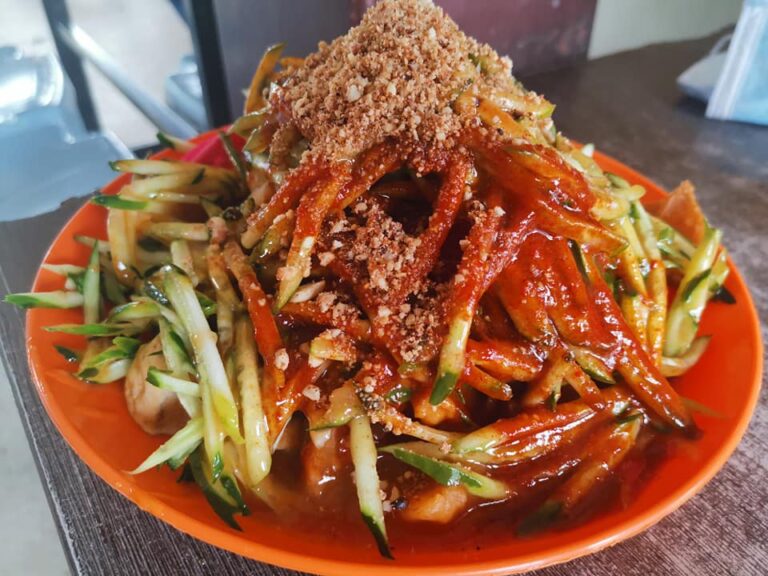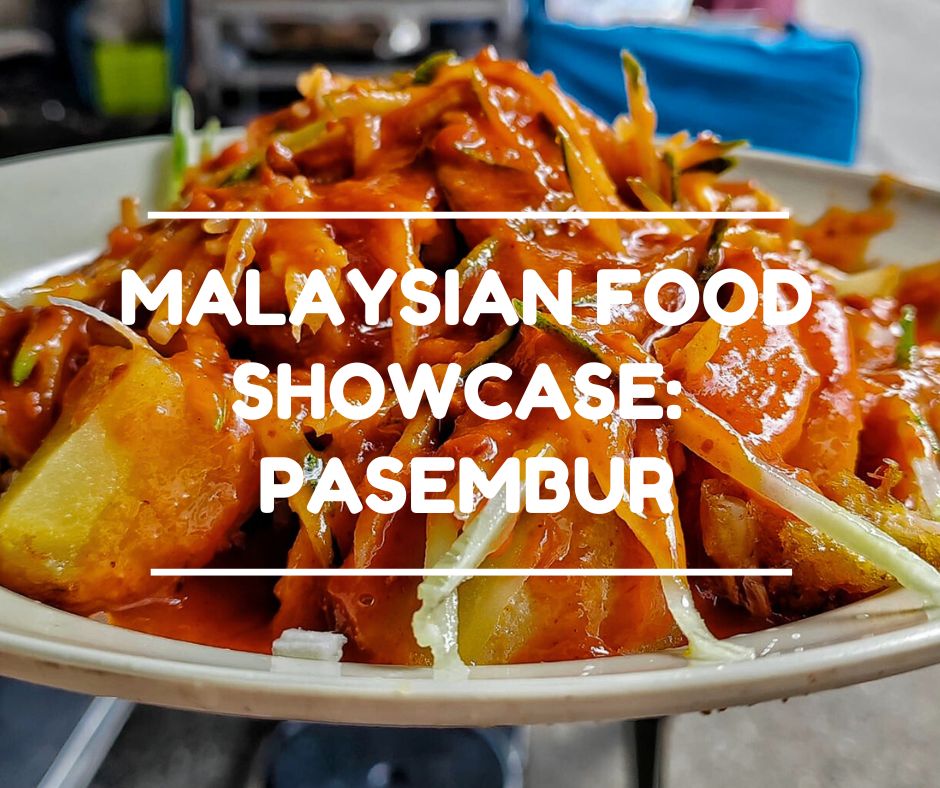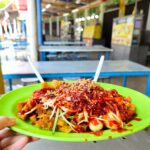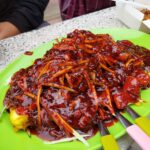Pasembur: The Hearty Spicy Salad of Penang
Pasembur, sometimes called Pasemboq in the northern dialect, is Penang’s ultimate rojak. It is a hearty, vibrant salad of shredded vegetables and deep-fried goodies, all slathered in a rich, spicy, orangey sauce, a dish that somehow feels indulgent yet oddly wholesome at the same time.
Becareful though, if you ask for rojak in Penang, you might get a plate of fruit drenched in dark, sticky sauce, which is the fruity rojak that the rest of Malaysia is familiar with. So make sure you look for signages that say Pasembur or Pesambur Rojak or even the chinese words 青鱼\鲜鱼 (I’ll get to this later).
Pasembur is all about textures. You start with fresh julienned cucumber, blanched bean sprouts, and sliced jicama (sengkuang). Then come the heavier hitters: fried tofu, hard-boiled eggs, shrimp fritters (cucur udang), and a parade of deep-fried items like crab sticks, fish cake, spiced squid, and even beef lungs. These are all cut into manageable chunks and arranged in a golden heap. The entire ensemble is then brought together by a warm, luscious sauce made from mashed sweet potatoes, roasted peanuts, chilies, tamarind, and occasionally a hint of belacan. Depending on the stall, you might find additions like crushed biscuits, peanut butter, garlic, or lemongrass in the mix. It’s creamy, nutty, just a little spicy, and sticks to every piece like it was meant to be there all along.
Despite some similarities to South Asian chaat or Indonesian gado-gado, pasembur is uniquely Malaysian. Most food historians agree it was created by Indian Muslim hawkers in Penang during the 20th century, likely as an adaptation of existing local rojak dishes. Tamil hawkers, who once focused on selling vadai and masala vada, began expanding their menu with tofu, prawn fritters, and a wider array of fried snacks to appeal to the multiracial crowd around them. One enduring theory suggests that the name “pasembur” may be a mangled echo of Sri Lanka’s pol sambol, or perhaps connected to places like Chembur near Mumbai or Semboor in Tamil Nadu. These aren’t confirmed, but they reflect how food names often travel and transform.
Across Malaysia, the name might change but the spirit remains. In Kuala Lumpur, the same dish is known simply as Rojak Mamak or Rojak Penang. The pasembur of Kedah, meanwhile, is more often sold by Malay vendors, whereas in Penang it’s typically the Indian Muslim mamaks who run the show. Interestingly, many stalls also sell mee goreng mamak using a sauce almost identical to pasembur’s, linking the two dishes in more ways than one. There’s also a synonymous Chinese-style Pasembur called 青鱼/鲜鱼 “cheh-hoo” (Hokkien for “raw fish”) sold by Chinese vendors, usually with a lighter and less spicy sauce.
Walk through a pasar malam or hawker complex in Penang and you’ll spot the pasembur stall by its glorious tray display: stacks of deep-fried everything, tofu blocks, fish balls, squid, and more, waiting to be picked. You point out what you want, and the vendor will chop everything into bite-sized bits, add a bed of crunchy vegetables, and drizzle the thick gravy over the top, or serve it on the side if you ask. But fair warning: each item is priced individually, so your plate can get pricey if you go wild with the seafood.
Pasembur is typically eaten in the late afternoon or evening, often as a shared snack or light dinner. It’s best enjoyed fresh, while the fritters still hold their crunch and the sauce clings warmly to every bite. Some eat it with noodles, others as a starter before mee goreng mamak. However you have it, pasembur is a dish that turns humble ingredients into something far greater than the sum of its parts. And trust us: don’t skimp on the sauce. It’s the soul of the Pasembur!





